Biohacking Market Size
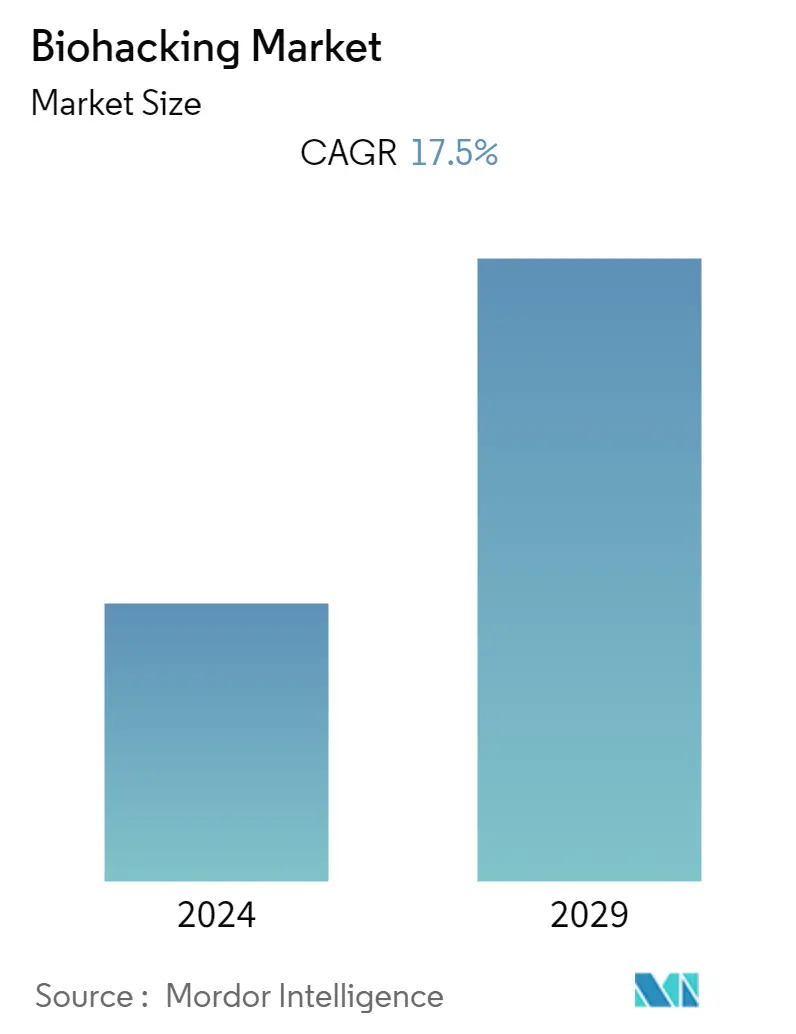
| Study Period | 2019 - 2029 |
| Base Year For Estimation | 2023 |
| CAGR | 17.50 % |
| Fastest Growing Market | Asia Pacific |
| Largest Market | North America |
| Market Concentration | Medium |
Major Players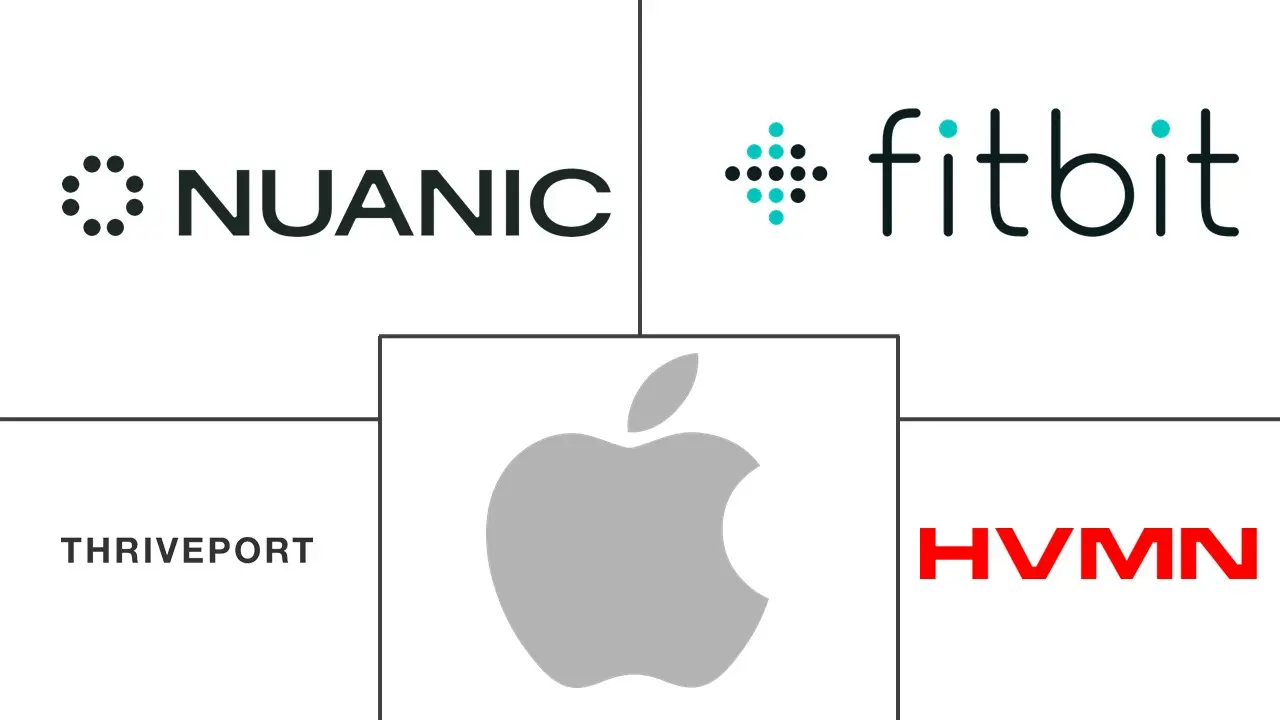
*Disclaimer: Major Players sorted in no particular order |
Biohacking Market Analysis
The Biohacking Market studied is anticipated to grow at a CAGR of 17.5% during the forecast period.
During the initial phase of the COVID-19 pandemic, the market experienced significant growth, as the negative impact of COVID-19 was very negligible. For instance, in March 2020, during the initial phase, there was a coalition formed, namely Just One Giant Lab (JOGL), to develop solutions to the myriad challenges posed by the coronavirus. Since then, the group has seen a record number of engagement on its platforms, it says, with 380 members from every continent on the planet except Antarctica working together to develop coronavirus tools. Thus, such initiatives have reduced the adverse impact of COVID-19 during the initial phase. Furthermore, initiatives by key market players, such as product launches, are expected to increase market growth. For instance, in July 2021, Scientists at the University of Texas at Dallas developed a wearable sweat sensor that can monitor the body's immune response to COVID-19 and other infections.
Similarly, various smartphone companies have launched bands/watches with optical sensors to monitor SpO2 levels in the blood. Optical SpO2 sensors use red and infrared light sensors to detect your oxygen levels, sensing changes in those levels by looking at the color of the blood. For instance, in January 2021, Oneplus launched the OnePlus Band equipped with a SpO2 blood-oxygen saturation monitor with an optical sensor that monitors the sleep, heart rate, and fitness of the user. Thus, such product launches are expected to increase the adoption of this technology and further increase the market growth.
Various factors have affected the market growth, such as advancements in healthcare technology, increasing focus on preventive healthcare, and the rising demand for personalized medicine. Advancements in technology within the biohacking market are benefiting from the miniaturization of medical sensors and their integration with biohacking devices. These sensors, which respond to physical stimuli such as sound, pressure, heat, light, and motion, offer detailed sensing techniques for diagnosing, monitoring, imaging, and treating diseases. The miniaturization of sensors enables seamless integration with biohacking devices, allowing for continuous and real-time monitoring of physiological parameters. This integration enhances biohackers' ability to collect accurate and personalized data, providing insights for optimizing performance, managing stress, and achieving health goals.
Similarly, the acquisition is another factor in market growth as it increases the investment in upcoming advanced sensor technology invented by the startups. For instance, in November 2022, CardieX Limited acquired Blumio, Inc., a Silicon Valley-based developer of advanced algorithms and technology for cardiovascular sensors, signifying the company's continued investment in cardiovascular health monitoring technologies. Blumio's technology has the potential to significantly increase clinical performance for CardieX's ecosystem of heart health monitoring solutions.
Personalized medicine aims to tailor medical treatments and interventions to individual patients based on their unique genetic makeup, lifestyle factors, and health characteristics. For instance, in February 2022, SEngine Precision Medicine Inc., and Oncodesign entered into a research collaboration agreement for the R&D of a new personalized cancer treatment to evaluate the feasibility to convert the already identified Nanocyclix inhibitor series into drug candidates that are likely to be effective in the clinic. Biohacking techniques, tools, and communities can contribute to the development and adoption of personalized medicine by enabling individualized health monitoring, genetic analysis, self-optimization, collaboration, and consumer empowerment. Thus, the increasing advancement in technology and demand for personalized medicine is expected to increase market growth over the forecast period.
However, the ethical and regulatory concerns coupled with the data privacy and security risks are expected to hinder market growth.
Biohacking Market Trends
Implantable Devices and Wearables Segment is Expected to Hold a Significant Market Share Over the Forecast Period
The sensors used to diagnose, monitor, or treat diseases in the healthcare industry are known as medical sensors. The increasing use of health sensor technology in the treatment and maintenance of diseases is the major factor driving the segment's growth. Additionally, the increasing prevalence of diseases and the need for implants and wearables to monitor the conditions is expected to increase segmental growth. For instance, according to the August 2022 report of the British Heart Foundation (BHF), an estimated 7.6 million people are living with heart or circulatory disease in the United Kingdom, and factors such as aging and growing population and improved survival rates from heart and circulatory diseases are further expected to increase the burden of cardiovascular diseases in the United Kingdom. Hence, with the rising burden of CVDs, the studied market is expected to grow over the forecast period.
Various product launches and approvals are expected to increase segmental growth. For instance, in April 2022, Biotricity launched the commercial sales of its FDA-cleared, wireless wearable cardiac monitoring device, Biotres. Biotres is the company's revolutionary technology in remote patient monitoring and the delivery of real-time diagnostic data. The sensor in the device is designed to continuously record electrocardiogram (ECG) data for early detection of cardiac arrhythmias, disrupting the conventional one-lead patch Holter monitor. Similarly, in May 2021, WISE Srl CE marking of its WISE Cortical Strip (WCS), a single-use medical device intended to be used on the surface of the brain for intraoperative neurophysiological monitoring (IONM). The sensor works through the surface of the brain for IONM. Thus, the product launches are expected to drive segmental growth with their adoption for constant monitoring.
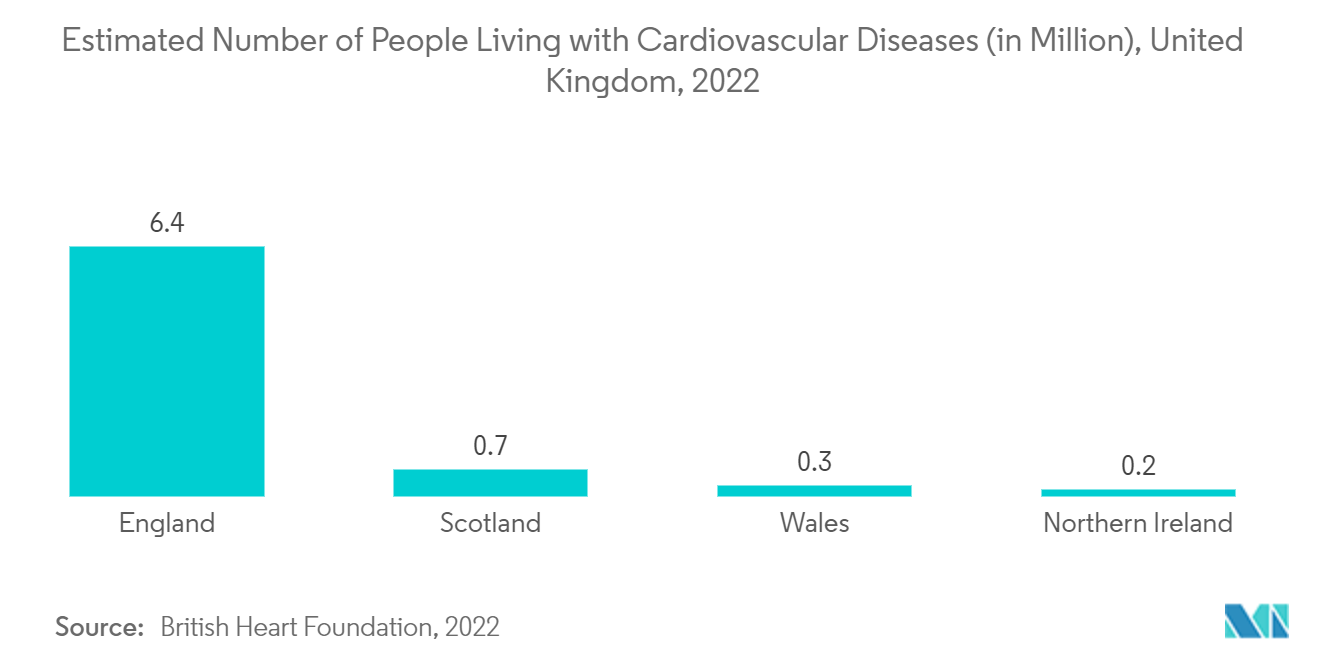
North America is Expected to Hold a Significant Share in the Market Over the Forecast Period
The North America region is expected to grow due to primary factors such as increasing incidences of chronic diseases and the initiatives by key market players such as product launches. As per the Alzheimer's Association 2022 Alzheimer's Disease Facts and Figures, in 2022 around 6.5 million Americans aged 65 and older were living with Alzheimer's dementia in the United States. By 2050, the number of people aged 65 and older with Alzheimer's dementia is projected to increase to 12.7 million. This high burden of Alzheimer's disease surges the demand for biohacking in the treatment of the disease condition, thereby leading to the growth of the studied market in the country. Additionally, the prevalence of cardiovascular diseases among the Canadian population is expected to contribute to the demand for biohacking. As per the Canadian Institute for Health Information data published in July 2022, about 2.4 million Canadians will have heart disease in 2022. Such prevalence of chronic cardiovascular diseases in Canada is expected to contribute to the growth of the market.
Product approvals and launches are expected to increase market growth. For instance, in May 2023, Neuralink received Food and Drug Administration (FDA) clearance for the human clinical trial. Similarly, in September 2022, MycoLab USA LLC launched the GOT MOLD Test Kit. Similarly, in September 2021 BrainTap launched the Biohacking Bundle with exclusive content from renowned health & wellness visionaries in the biohacking and longevity space. Thus, these product approvals and clinical trials provide insight into the demand for such products, which is expected to increase the adoption and further increase market growth in the region.
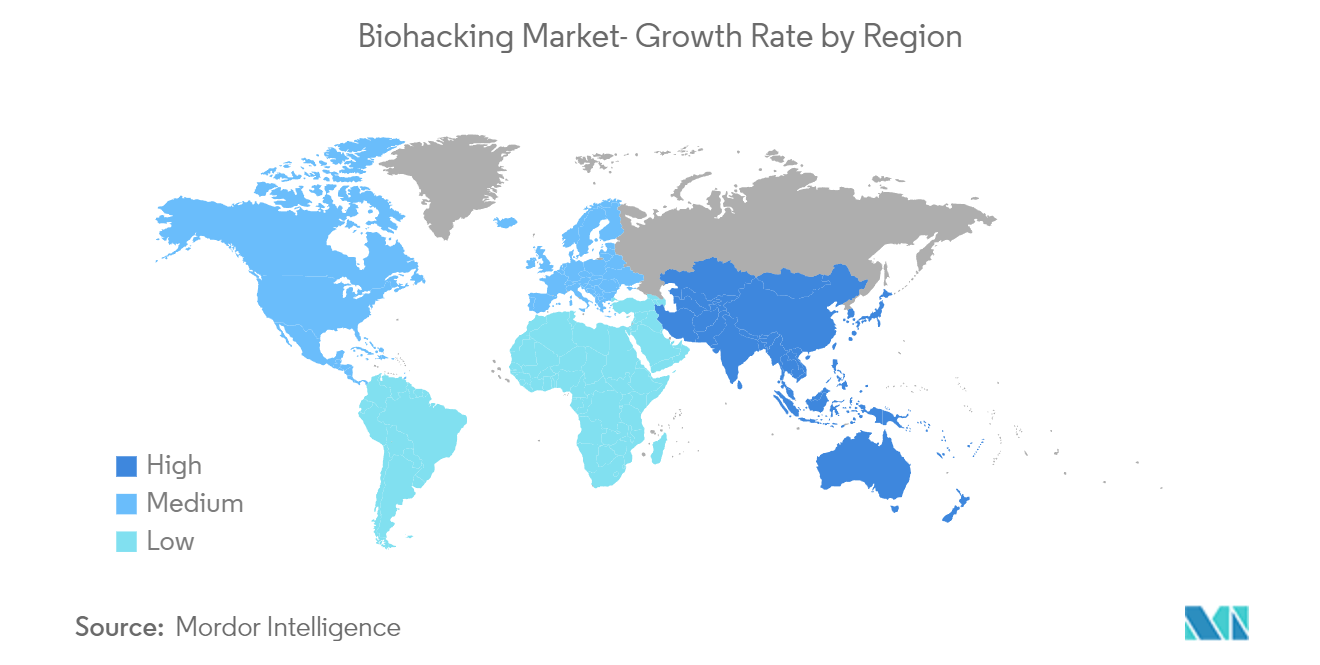
Biohacking Industry Overview
The biohacking market is expected to be moderately fragmented, with several key players in the market. Various strategies, such as the acquisition of the products by other companies, consolidate the market positions across the globe. Some major players include Apple Inc., Fitbit, Inc., Nuanic, Health Via Modern Nutrition Inc, and Thriveport, LLC, among others.
Biohacking Market Leaders
-
Apple Inc.
-
Fitbit, Inc.
-
Nuanic
-
Health Via Modern Nutrition Inc
-
Thriveport, LLC
*Disclaimer: Major Players sorted in no particular order
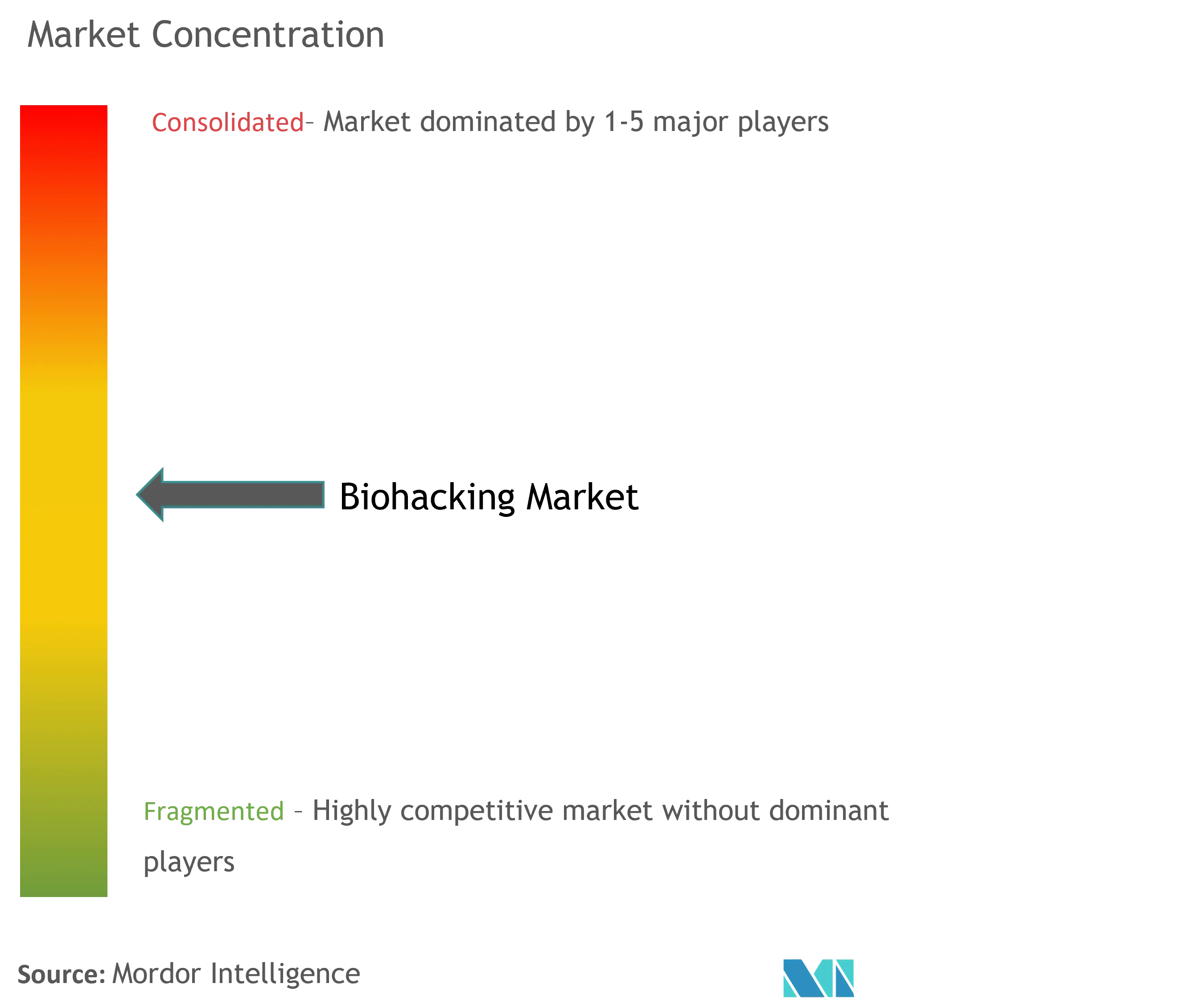
Biohacking Market News
- July 2022: Synchron implanted a human brain-computer interface (BCI) implant in the United States. Once implanted, it detects and wirelessly transmits motor intent to allow paralyzed patients to control personal devices with hands-free point-and-click.
- February 2022: The Food and Drug Administration approved the Eversense E3 Continuous Glucose Monitoring (CGM) System implantable biosensor that can track glucose levels in people with diabetes. The sensor can be worn under the skin continually for up to 180 days.
Table of Contents
1. INTRODUCTION
1.1 Study Assumptions and Market Definition
1.2 Scope of the Study
2. RESEARCH METHODOLOGY
3. EXECUTIVE SUMMARY
4. MARKET DYNAMICS
4.1 Market Overview
4.2 Market Drivers
4.2.1 Advancements in Healthcare Technology
4.2.2 Increasing Focus on Preventive Healthcare
4.2.3 Rising Demand for Personalized Medicine
4.3 Market Restraints
4.3.1 Ethical and Regulatory Concerns
4.3.2 Data Privacy and Security Risks
4.4 Porter's Five Forces Analysis
4.4.1 Threat of New Entrants
4.4.2 Bargaining Power of Buyers/Consumers
4.4.3 Bargaining Power of Suppliers
4.4.4 Threat of Substitute Products
4.4.5 Intensity of Competitive Rivalry
5. MARKET SEGMENTATION (Market Size by Value - USD Million)
5.1 By Products
5.1.1 Genetic Engineering and Gene Editing Tools
5.1.2 DIY Biology Kits and Biohacking Accessories
5.1.3 Implantable Devices and Wearables
5.1.4 Cognitive Enhancement and Nootropics
5.1.5 Others
5.2 By Applications
5.2.1 Medical Diagnostics and Monitoring
5.2.2 Biohacking for Personalized Treatment Plans
5.2.3 Cognitive Enhancement for Mental Performance
5.2.4 Genetic Editing for Personalized Gene Therapies
5.2.5 Others
5.3 By End Users
5.3.1 Pharmaceutical and Biotechnology Companies
5.3.2 Research Institutes and Academic Centers
5.3.3 Hospitals and Healthcare Facilities
5.3.4 Others
5.4 Geography
5.4.1 North America
5.4.1.1 United States
5.4.1.2 Canada
5.4.1.3 Mexico
5.4.2 Europe
5.4.2.1 Germany
5.4.2.2 United Kingdom
5.4.2.3 France
5.4.2.4 Italy
5.4.2.5 Spain
5.4.2.6 Rest of Europe
5.4.3 Asia-Pacific
5.4.3.1 China
5.4.3.2 Japan
5.4.3.3 India
5.4.3.4 Australia
5.4.3.5 South Korea
5.4.3.6 Rest of Asia-Pacific
5.4.4 Middle East and Africa
5.4.4.1 GCC
5.4.4.2 South Africa
5.4.4.3 Rest of Middle East and Africa
5.4.5 South America
5.4.5.1 Brazil
5.4.5.2 Argentina
5.4.5.3 Rest of South America
6. COMPETITIVE LANDSCAPE
6.1 Company Profiles
6.1.1 Apple Inc.
6.1.2 Biohacker Center Store
6.1.3 Fitbit, Inc.
6.1.4 Health Via Modern Nutrition Inc
6.1.5 InteraXon Inc.
6.1.6 Nuanic
6.1.7 OSTEOSTRONG
6.1.8 Pavlock
6.1.9 Synthego
6.1.10 The ODIN
6.1.11 Thriveport, LLC
6.1.12 TrackMyStack
- *List Not Exhaustive
7. MARKET OPPORTUNITIES AND FUTURE TRENDS
Biohacking Industry Segmentation
As per the scope, biohacking or body hacking is the practice of putting RFID chip implants, sensors, magnets, and other tech implants under the skin. The Biohacking Market is segmented by Products (Genetic Engineering and Gene Editing Tools, DIY Biology Kits and Biohacking Accessories, Implantable Devices and Wearables, Cognitive Enhancement and Nootropics, and Others), Applications (Medical Diagnostics and Monitoring, Biohacking for Personalized Treatment Plans, Cognitive Enhancement for Mental Performance, Genetic Editing for Personalized Gene Therapies, and Others), End Users (Pharmaceutical and Biotechnology Companies, Research Institutes and Academic Centers, Hospitals and Healthcare Facilities, and Others), and Geography (North America, Europe, Asia-Pacific, Middle East and Africa, and South America). he market report also covers the estimated market sizes and trends for 17 different countries across major regions, globally. The report offers the value (in USD million) for the above segments.
| By Products | |
| Genetic Engineering and Gene Editing Tools | |
| DIY Biology Kits and Biohacking Accessories | |
| Implantable Devices and Wearables | |
| Cognitive Enhancement and Nootropics | |
| Others |
| By Applications | |
| Medical Diagnostics and Monitoring | |
| Biohacking for Personalized Treatment Plans | |
| Cognitive Enhancement for Mental Performance | |
| Genetic Editing for Personalized Gene Therapies | |
| Others |
| By End Users | |
| Pharmaceutical and Biotechnology Companies | |
| Research Institutes and Academic Centers | |
| Hospitals and Healthcare Facilities | |
| Others |
| Geography | ||||||||
| ||||||||
| ||||||||
| ||||||||
| ||||||||
|
Frequently Asked Questions
What is the current Biohacking Market size?
The Biohacking Market is projected to register a CAGR of 17.5% during the forecast period (2024-2029)
Who are the key players in Biohacking Market?
Apple Inc., Fitbit, Inc., Nuanic, Health Via Modern Nutrition Inc and Thriveport, LLC are the major companies operating in the Biohacking Market.
Which is the fastest growing region in Biohacking Market?
Asia Pacific is estimated to grow at the highest CAGR over the forecast period (2024-2029).
Which region has the biggest share in Biohacking Market?
In 2024, the North America accounts for the largest market share in Biohacking Market.
What years does this Biohacking Market cover?
The report covers the Biohacking Market historical market size for years: 2019, 2020, 2021, 2022 and 2023. The report also forecasts the Biohacking Market size for years: 2024, 2025, 2026, 2027, 2028 and 2029.
Biohacking Industry Report
Statistics for the 2024 Biohacking market share, size and revenue growth rate, created by Mordor Intelligence™ Industry Reports. Biohacking analysis includes a market forecast outlook to for 2024 to 2029 and historical overview. Get a sample of this industry analysis as a free report PDF download.



